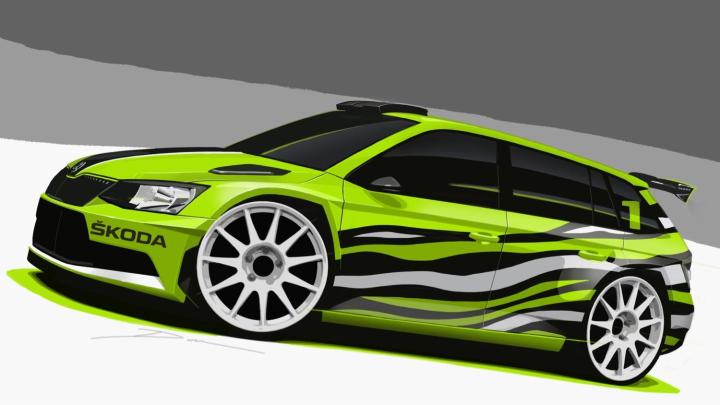
Every year, VW gives a big “thank you” to its fans by unveiling a series of concepts from its different brands at the Worthersee festival. So far this year, Skoda has already teased a cute Fabia FUNstar pickup truck, but it’s following that up with something a little more aggressive.
The Skoda Fabia Combi R5 concept is what the Czech brand imagines it would be like to combine a rally car and a station wagon.
Although the name isn’t as recognizable as Audi, Ford, or Subaru, Skoda has a long history in rallying. Its latest Fabia R5 rally car debuted last month in the Czech Rally Championship, winning its first race.
Skoda decided to capitalize on the win by turning the Fabia R5 into a wagon. So it took a stock Fabia Combi and pumped it up with 18-inch alloy wheels, a more aggressive front fascia, mud guards, a huge rear spoiler, and a rear bumper enlarged to accommodate a central exhaust tip.
Then there’s that green, black, and white livery, which could prove advantageous in an actual rally by giving the competition seizures.
Power for the concept comes courtesy of a 1.6-liter turbocharged four-cylinder engine, which is connected to a five-speed sequential transmission and all-wheel drive.
While Skoda does make hot versions of the road-going Fabia, a production version of the Fabia Combi R5 is a long shot. And even if it did get built, like the rest of the Skoda brand, it wouldn’t be offered in the U.S.
Almost 40 years after the AMC Gremlin went out of production, Americans seem to have finally gotten over their disdain of hatchbacks. But as usual, Europe is way ahead of us when it comes to small, sporty cars.
The Ford Focus ST is available as a wagon in Europe, and there’s a VW Golf GTD Variant on the way as well. Along with this Skoda concept, they show the potential of these vehicles as an evolution of the hot hatchback.
But with wagon sales subsumed by crossovers in the U.S., that may be a trend we’ll miss out on.



